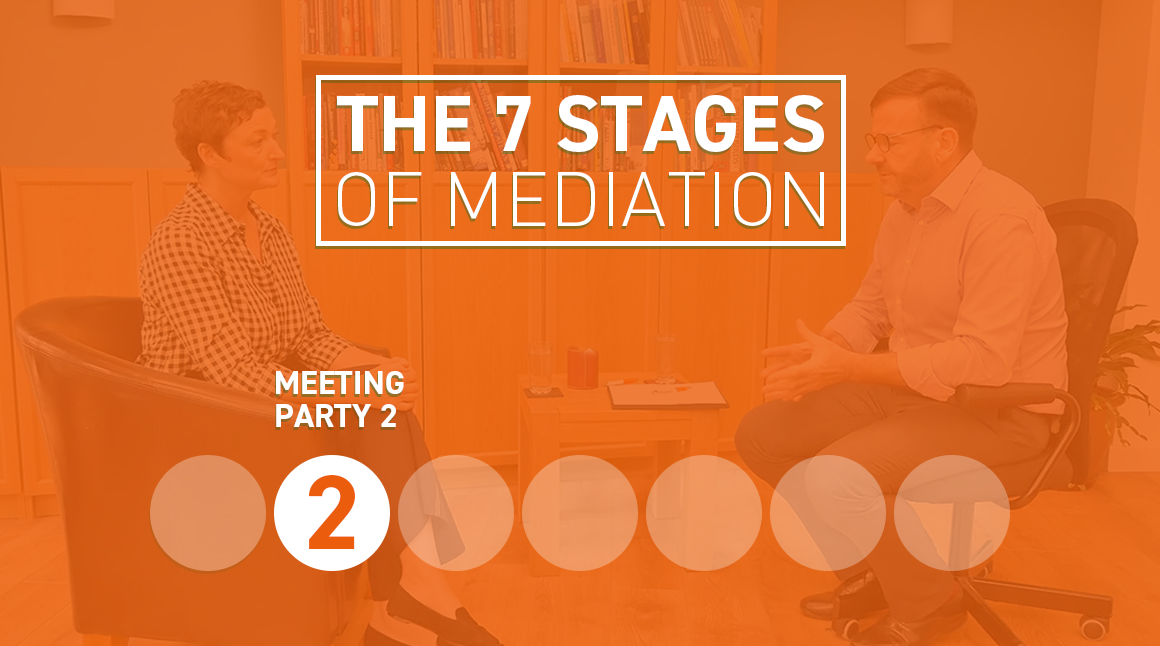
Posted on: July 14th, 2025

Over the last 26 years, UK Mediation has developed and honed our own 7-Stage Mediation Model for interpersonal disputes. Based on Dr Mike Talbot’s pioneering work, as well as experience gained from mediating thousands of cases, the 7 stages cover the entirety of a typical mediation day. This includes the individual meetings with each party, the joint mediation session, and finally the forming of the written agreement.
Following on from our first article, which looked at Stage One, we now meet the second party in Stage Two…
One of the trickiest tasks for a mediator is the initial approach to the second party. Our ultimate aim is to put them at ease and to encourage them to take part. They may have already had some information, but they may want to know more about you and the process.
Stages One and Two should be identical in that they provide a safe and confidential environment for parties to discuss their perceptions of the conflict, their different experiences of what has happened, and how they have been affected by it.
On top of that, we also need to demonstrate our impartiality and maintain confidentiality, two of the three key principles of mediation.
Once we have met both parties, we may start to see them take on ‘roles’ within the dispute. This is best illustrated by Karpman’s Drama Triangle, which provides a way of thinking about power, vulnerability, and the mediator’s role in an interpersonal conflict.
These roles are based on the parties’ personality, upbringing, and learned ways of coping, and parties can often change roles during the course of the dispute and mediation.
Roles could be one of:
Victim: ‘Poor me!’
The person behaves as if they are overwhelmed, helpless, and hopeless
Persecutor: ‘It’s all your fault!’
The persecutor’s stance is controlling, blaming, and critical
Rescuer: ‘Let me help you!’
The person is nice, needed, and in charge
Typically, disputants slip into the roles of victim and persecutor. Then, if we as mediators inadvertently perpetuate the drama, we would simply slot into the often-vacant ‘Rescuer’ role.
The way to leave the triangle is to be aware of the roles and of the ‘pay-offs’ that each role brings, and to consider that:
Instead of becoming a victim, a person could accept their vulnerability and problem-solve for themselves
Instead of taking up the persecutor role, a person could recognise that they are indeed powerful, and could ask for what they want without being manipulative or oppressing others
Instead of rescuing, someone could accept that they can still be responsive to another’s needs, but do not have to try to solve people’s problems for them
This third position - the responsive and impartial role - is the most pivotal in being able to re-direct the dynamic of a conflict back into healthy territory. This position is most consistent with the mediator role, and involves:
Being a supportive, empathic listener
Providing a chance for reflection
Recognising the other people as being able to take care of themselves, solve their own problems, and deal with their feelings as they choose
Staying impartial, and not seeing a dispute as a win-lose situation
After meeting both parties individually, and before we bring them together, we must consider the best way forward, and whether mediation is even appropriate at all. This is Stage 3, which we will look at in the next article…